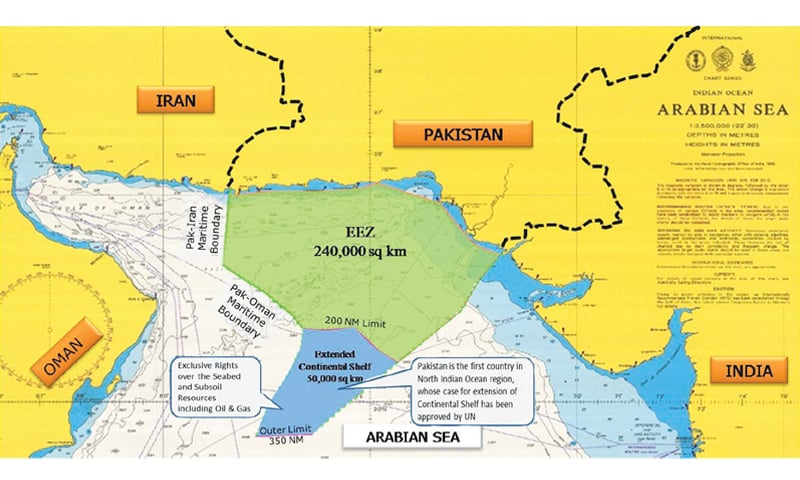daring dude
FULL MEMBER

- Joined
- Jul 22, 2013
- Messages
- 836
- Reaction score
- 0
- Country
- Location

The UN verdict will boost Pak efforts aimed at socioeconomic uplift of people, says Sartaj. -Dawn/File
ISLAMABAD: Pakistan’s seabed territory grew by about 50,000 square kilometres after a UN body accepted Islamabad’s claim for extension of sea limits.
“On 19 March 2015, United Nations’ Commission on Limits of Continental Shelf (UNCLCS) completed its review and accepted Pakistan’s claim for extension of its continental shelf limits, thereby extending Pakistan’s sea limits from 200 nautical miles to 350 nautical miles,” Pakistan Navy’s media directorate said.
Following the acceptance of the claim, Pakistan’s offshore territory of 240,000sqkm would expand by another 50,000sqkm allowing the country to benefit from the natural resources contained in it.

The UN verdict will boost Pak efforts aimed at socioeconomic uplift of people, says Sartaj
The United Nations Convention on the Law of the Sea (UNCLOS) grants special rights to the coastal states with regards to exploration and use of marine resources, including energy production in the area in its jurisdiction, which is also described as exclusive economic zone.
Under the UNCLOS, coastal countries are allowed economic control of the waters and seabed up to 200nm from their shores. The international treaty allows countries to further claim an extended continental shelf stretching up to 350nm from the baselines of its territorial sea if they could prove that the claimed area was a natural prolongation of their land territory.
Pakistan welcomed the UN commission’s verdict, terming it a “landmark achievement and a momentous event in the country’s history”.
Adviser to Prime Minister on Foreign Affairs and National Security Sartaj Aziz in a statement said: “It is of great satisfaction for us that Pakistan’s claim at the United Nations’ Commission on Limits of Continental Shelf, for extension of outer limits of its continental shelf, has been unanimously approved.”
This development, he said, would boost Pakistan’s efforts aimed at sustainable socioeconomic uplift of the people of Pakistan.
Article 76(4) to (6) of the UNCLOS prescribes a complicated formula for claiming such an extension. The claimant state has to present legal and scientific basis for its claim before a 21-member commission of experts. The evidence is accompanied by maps to prove that the claimed continental shelf is extension of its territory and fits the description given under Law of Sea Treaty of 1982.
Pakistan had filed its case with the UNCLCS on April 30, 2009. The application was preceded by a four-year extensive study jointly conducted by the Pakistan Navy and National Institute of Oceanography under the patronage of Ministry of Science and Technology.
A seven-member sub-commission of the UNCLCS evaluated Pakistan’s case for a year and accepted Pakistan’s claim.
Some of the claimed territory overlapped Omani claim. It is believed that the verdict in favour of Pakistan was announced after successful negotiations with Oman.
Mr Aziz in his statement thanked the government of Oman.
“We are thankful to the brotherly country of Oman for its understanding and cooperation in the matter,” the adviser said.




